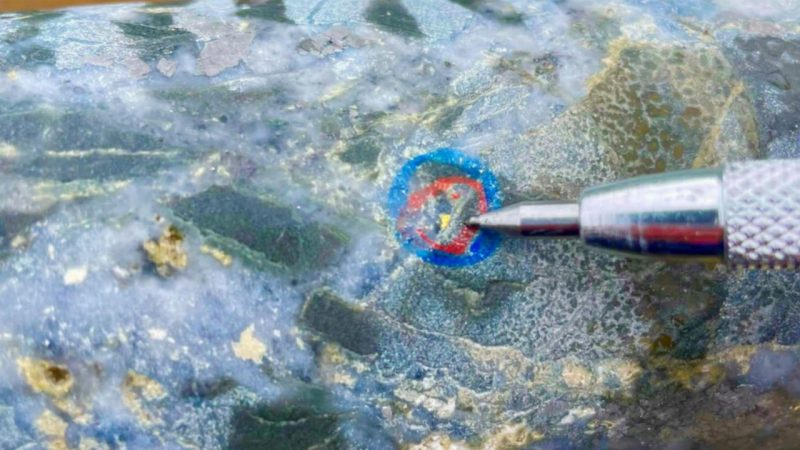- Flynn Gold (ASX:FG1) hits gold in Tasmania as part of its maiden drill run
- The company found brief intersections of low-to-mid-grade gold at depths of more than 60 metres
- Shareholders are selling off the stock with FG1 last trading at 5.7 cents
Microcap Flynn Gold (ASX:FG1) has hit first-stage evidence of a possible orogenic-style mineralised gold system in Tasmania at the company’s Warrentinna project.
And yet, the company’s shares were being sold off today. The stock was down 3.39 per cent to 5.7 cents at lunchtime.
The company sunk two diamond-tipped drill holes totalling 360 metres depth on-site with quartz veining intersected and samples assaying for gold.
The lead result Flynn highlighted was a 7.2-metre thick intersection hitting 2.5 grams of gold per tonne (g/t) from 70 metres depth.
This section contained a small pocket at 7g/t. The second intersection clocked in at five metres grading at 1.2g/t.
Next steps
Flynn geotechs are keen to investigate a 6-kilometre-long corridor on-site associated with historical mine workings which could contain, or point to, further untapped mineralisation.
The company also noted drill holes completed have given the company geotechnical data to inform future exploration.
Three historical results were highlighted, the largest intersection being 21.7 metres at 3.3g/t from 9.3 metres depth. A 5-metre intersection approaching bonanza grade was also flagged from 36 metres depth.
“Our drilling has confirmed the existence of multiple zones of gold mineralisation and added a structural context which will be used in targeting for future drilling campaigns,” Flynn CEO Neil Marston said.
“The Warrentinna goldfield is defined by shallow historic workings over a strike length of 6km, and with this campaign targeting gold mineralisation in the north of the goldfield, the remainder is largely untested.”
Making sense of stock movement
Behind the company’s lacklustre share price movement today is likely the sorts of drilling results that don’t scream unicorn find.
The company is ultimately posting assays for very brief intersections of mineralisation with grades below normally accepted ‘high grade’ thresholds.
A lack of gold at surface as historically found on-site before could also be a factor.
Of course, the stock is a microcap and so more vulnerable to volatility, and the market is trading in the red on Friday after US inflation came in one pip higher than expected.
Shares last traded at 5.7 cents.

